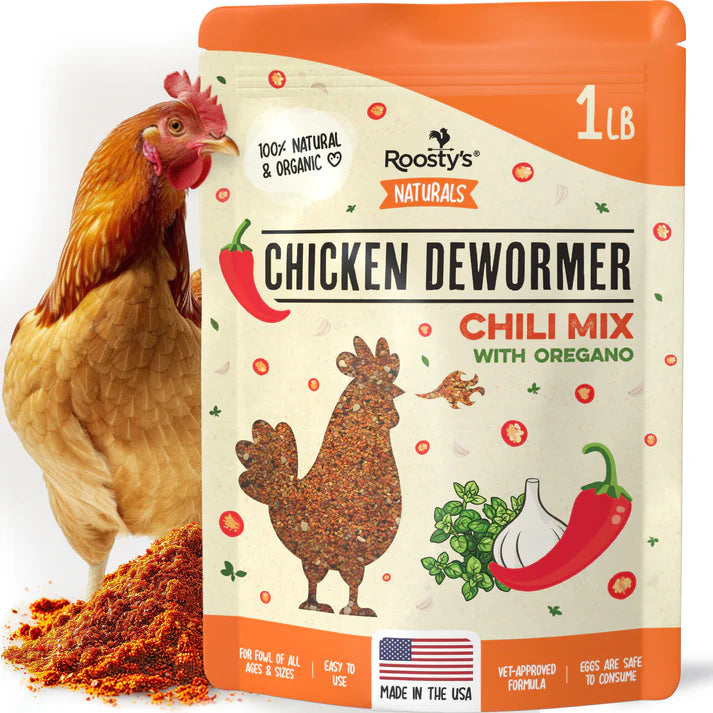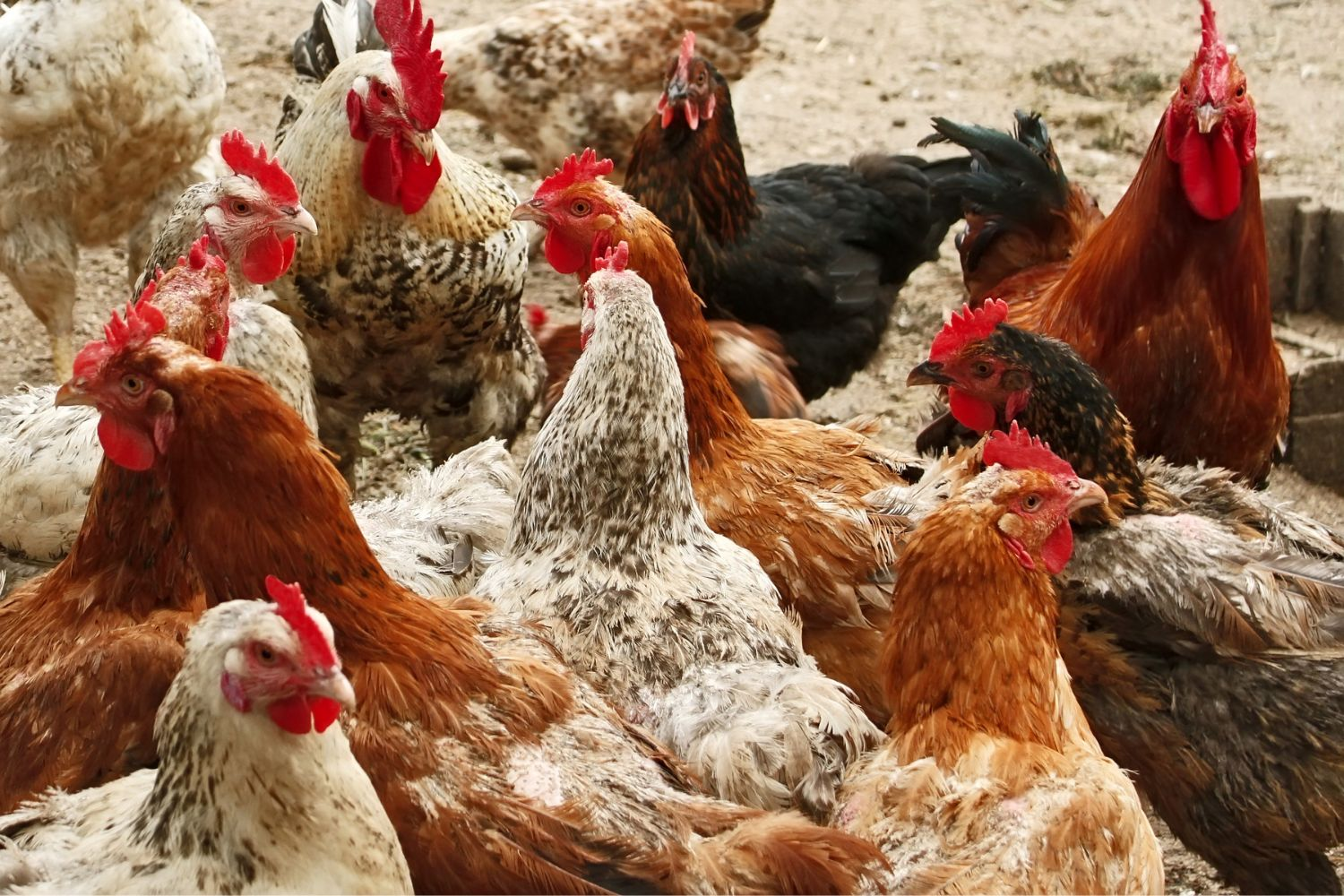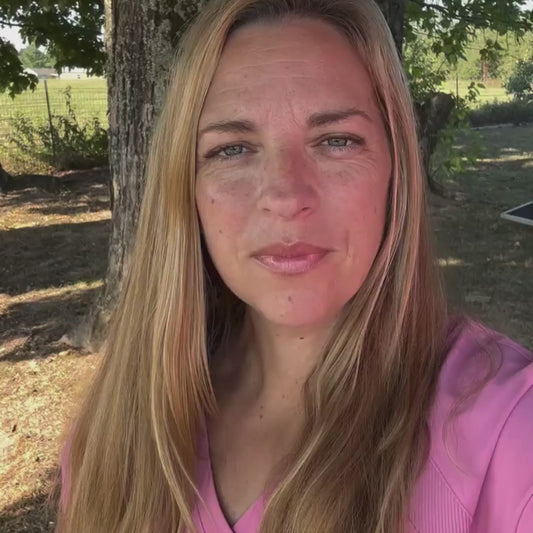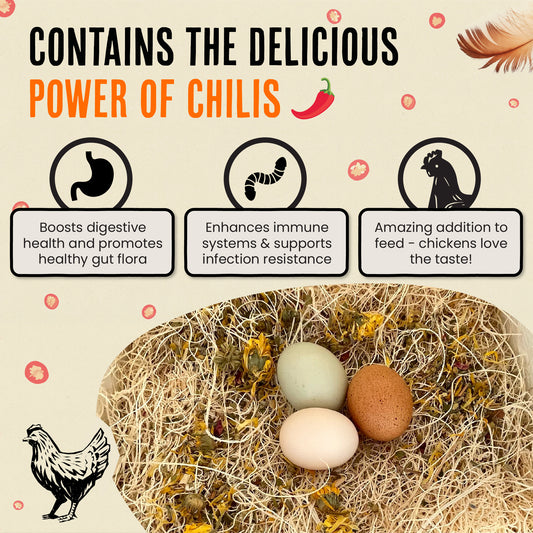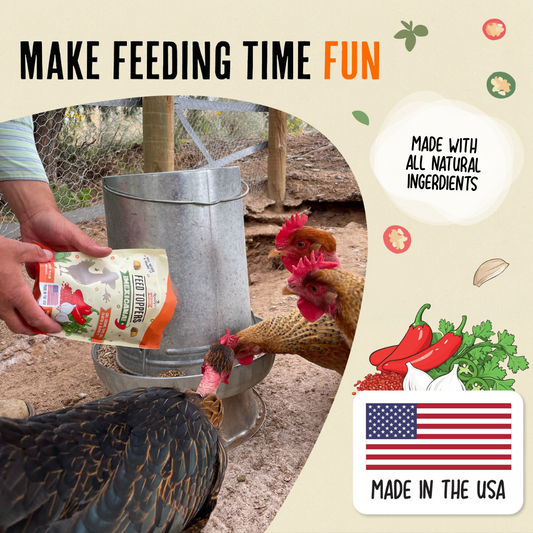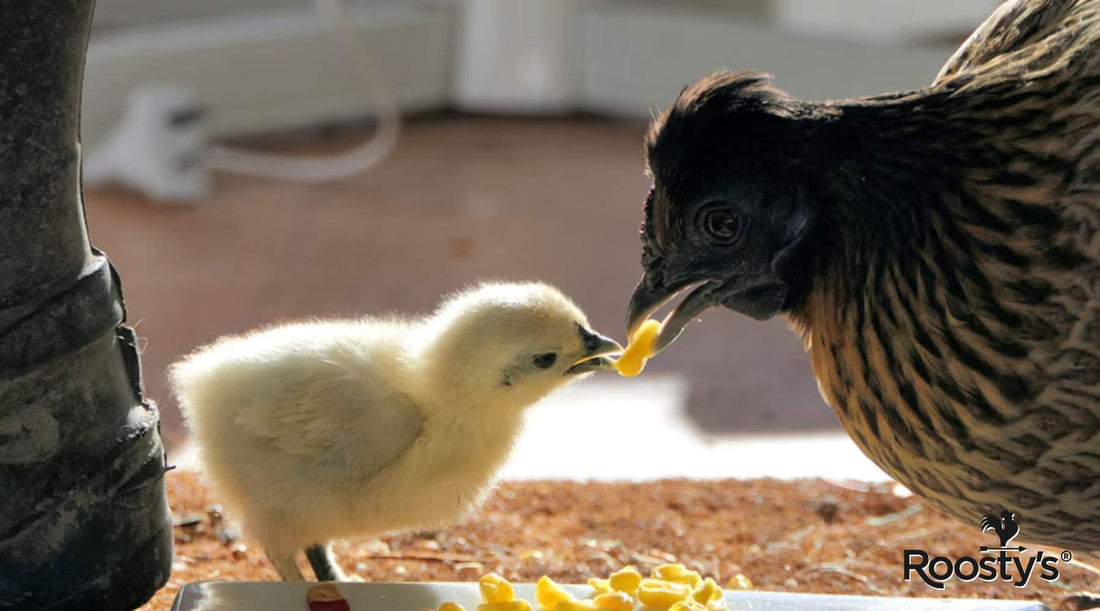
Make Your Own Chicken Feed – A Beginner's Guide

Many chicken owners buy feed from the store. But making your own has all sorts of benefits. It can be cheaper, easier to source, healthier for your birds, not to mention tastier!
But how do you make your own chicken feed? Well, you’re about to find out. This post draws on our expertise in feeding poultry to bring you everything you need to know.
You will discover how to grow your own chicken feed, various recipes, and tips and tricks for mixing high-protein formulations.
Homemade Chicken Feed: Easy And Cheap Options
But first, we look at some cheap chicken feed for home chickens. Here, we list the least expensive ingredients and why you should use them.
Ingredients For Homemade Chicken Feed
The main ingredient in commercial chicken feeds is grain crops, like maize and wheat. Fortunately, you can also include these cheap items in homemade recipes.
Options include:
- Corn
- Oats
- Peas
- Wheat
- Alfalfa meal
- Fermented seeds
You can also supplement your chickens’ diet with free calories from:
- Kitchen scraps
- Compost-pile grazing
- Bugs and grubs they find in the run
--------
Best Chicken Feed Ingredients For Optimal Nutrition
Interestingly, many of the cheapest ingredients are also the most nutritious for chickens. For example, alfalfa meal is a high-protein food for winter, while field peas are a recommended alternative to soy.
However, you must still supplement these grain crops with other high-nutrient-density foods. For instance, oyster shells are rich in calcium, providing large quantities of the mineral for egg-laying hens.
Likewise, flaxseed is high in omega-3, and cultured yeast has high concentrations of B vitamins, minerals, and digestive enzymes.
You can also add various herbs and spices. Cayenne supports circulation, while oregano and cinnamon offer immune support and antioxidant stress resistance.
Growing Your Own Chicken Feed: A Step-By-Step Guide

Growing your own chicken feed can be a fun process, and it helps bring the cost down even more. Instead of going to the store to buy ingredients for chicken feed, you learn how to grow your own.
This section provides a step-by-step process on how to do just that. Read on to learn more.
Step 1: Figure Out If You Have Room
First, you need to work out if you have room to grow feed crops. A 24-foot by 24-foot lot will provide enough corn annually for one chicken. (The figure is similar for soybeans and wheat). Therefore, you’ll need a 5,760-square-foot plot for ten chickens (which is quite a bit).
Don’t worry if you don’t have enough room for all your birds. You can always supplement their diet with store-bought food.
Step 2: Pick Your Crops
The next step is to pick crops your birds will eat. Chicken-friendly options include sunflowers, oats, soybeans, barley, and corn. If you have space, also grow vegetables like kale, collards, and oregano.
Step 3: Prepare The Soil And Start Planting
The next step is to prepare the soil and start planting. Plan out where each crop will go first and then rake it over, remove weeds and rocks, and add some well-rotted compost (preferably made from chicken coop bedding!)
When planting, ensure you place seeds at the correct depth and distance from other plants. For instance, you should leave 6 inches between sunflowers for optimal growth. Some crops can fail to thrive if you get the spacing wrong.
Step 4: Provide Care
Next, you’ll want to follow the growing guidelines for your crops. Ensure the soil has the right nutrients and you provide enough water.
Step 5: Harvest And Store
Finally, once crops reach their optimal size and height, it is time to harvest them. Again, the timing depends on the type of plants you grow.
Corn, barley, and wheat must develop fully before harvesting to prevent harming your chickens. Greens can be cut before they mature.
Store greens in the refrigerator or freezer. Keep grains in a cool, dry, and pest-free place, like a pantry.
The Process Of Grinding Chicken Feed Explained
Once you know how to grow chicken feed and store it, the next step is to grind it to the right size for your birds to eat.
Step 1: Choose A Grinder
How you grind your feed depends on the equipment you have available. Some chicken owners use industrial-scale hoppers to pulverize the meal, while others do it by hand.
Grinder choices include:
- Roller mills
- Hammer mills
- Burr mills
- Hands
- Blenders
Step 2: Calibrate The Grinder
Once you have your feed in hand, the next step is to prepare the grinder. Large equipment often requires you to set the desired particle size – not too big for chickens, but also not too small.
Starter flocks prefer average feed particle size between 900 and 1,100 microns, while older birds will accept up to 1,500 microns. (Obviously, consumer-grade equipment or hands won’t give you the ability to accurately judge particle size).
Step 3: Measure The Ingredients
Next, measure the ingredients. Add them in the proper ratio to get a formulation with sufficient proteins, fats, carbohydrates, and micronutrients. (We discuss recipes for making various types of chicken feed in the next section).
Step 4: Turn On The Grinder And Collect The Grounds
Finally, let the grinder go through its cycle and collect the grounds in a bag. Store the feed in a cool, dry place, preferably in rodent-proof tubs.
--------
Making Chicken Feed For Chicks At Home

Because of their growth demands, homemade chicken feed for chicks differs from full-size hens. Chicks need around 18 to 20% protein in their diet until eight weeks of age, which is considerably more than adult birds.
Because of this, a chicken feed ingredients formula for birds under eight weeks could be something like:
- 14 parts oats
- 10 parts wheat grain
- 6 parts split peas
- 3 parts fish meal
- 2 parts sunflower seeds
- 0.5 parts kelp
- 0.25 parts brewer’s yeast
You can use soybean meal if you don’t want to use fishmeal. Its amino acid ratio is similar and has the bonus of being cheaper.
DIY Chicken Feed Recipe For Layers
Next, we look at how to make chicken feed for layers. Homemade chicken feed for laying hens is generally lower in protein and, therefore, a bit cheaper than for chicks. However, it requires more calcium and other minerals for egg production.
Here’s a sample homemade chicken feed for layers:
- 60% corn, wheat, barley, and oats
- 28% soybeans, fishmeal, and sunflower meal
- 7% sesame seeds, flaxseed and kelp
- 5% crushed eggshells or ground limestone
The best DIY chicken feed recipe for layers is high in grains and minerals, as above. To make it:
- Grind or crack the grains to make them the right size for your adult chickens (usually 1,100 to 1,500 microns)
- Add your protein-rich sources (such as fishmeal, soybeans, etc.)
- Add the calcium element, essential for eggshell formation
- Add nutrient-rich elements, like flaxseed and kelp
- Mix all the ingredients in a container
Note that older birds can eat grains unground, meaning you don’t always need to grind them.
Mixing High Protein Chicken Feed: Tips And Tricks
Once you know how to make homemade chicken feed, the next step is to refine your processes. Like any good chef, you will improve with time.
To make the best homemade chicken feed with a high protein content, you will need to:
- Adjust the ratio of ingredients to include more high-protein foods
- Make sure to include adequate quantities of fat, protein, and carbohydrates. Chickens need around 14 to 16% of their diet from protein, rising to 15 to 18% when they start laying. Birds also require good vitamin B1, B12, A, D, E, and K supplies and plenty of iodine, manganese, copper, iron, zinc, magnesium, and cobalt.
- Include highly nutritious additives, such as sesame or seaweed
- Start with small batches at first, and then scale once you have formulations that make your chickens thrive
- Keep an eye on your flock’s egg-laying performance and overall health.
- Change chickens’ diets gradually. They can be fussy eaters!
Now Know How To Make Chicken Feed Yourself
Now you’ve read this blog, you know how to make chicken feed at home for laying hens, chicks, and other chickens. Recapping, we discovered:-
- You can make cheap DIY chicken feed from regular crops
- The best ingredients for chicken feed are nutrient-dense, like kelp or flaxseed
- How to grind chicken feed to the right consistency
- How to make chicken crumble chicken feed for all stages of the life cycle
- The best chicken feed ingredients
- How to mix chicken feed with high protein ingredients
Ultimately, growing and mixing your own chicken feed can be cheaper and better for your birds. But don’t forget that you can always supplement their diets with store-bought products.
FAQs
Can you make your own chicken feed?
You can make your own chicken feed, indeed. In fact, it might be healthier and more economical to do so.
Is fishmeal necessary for chickens?
Fishmeal is not necessary for chickens. However, it is an excellent source of protein, so if you eliminate it, you should replace it with something else.
What is the cheapest way to feed chickens?
The cheapest way to feed chickens is often to make their food from ingredients you already have on your property.
--------
